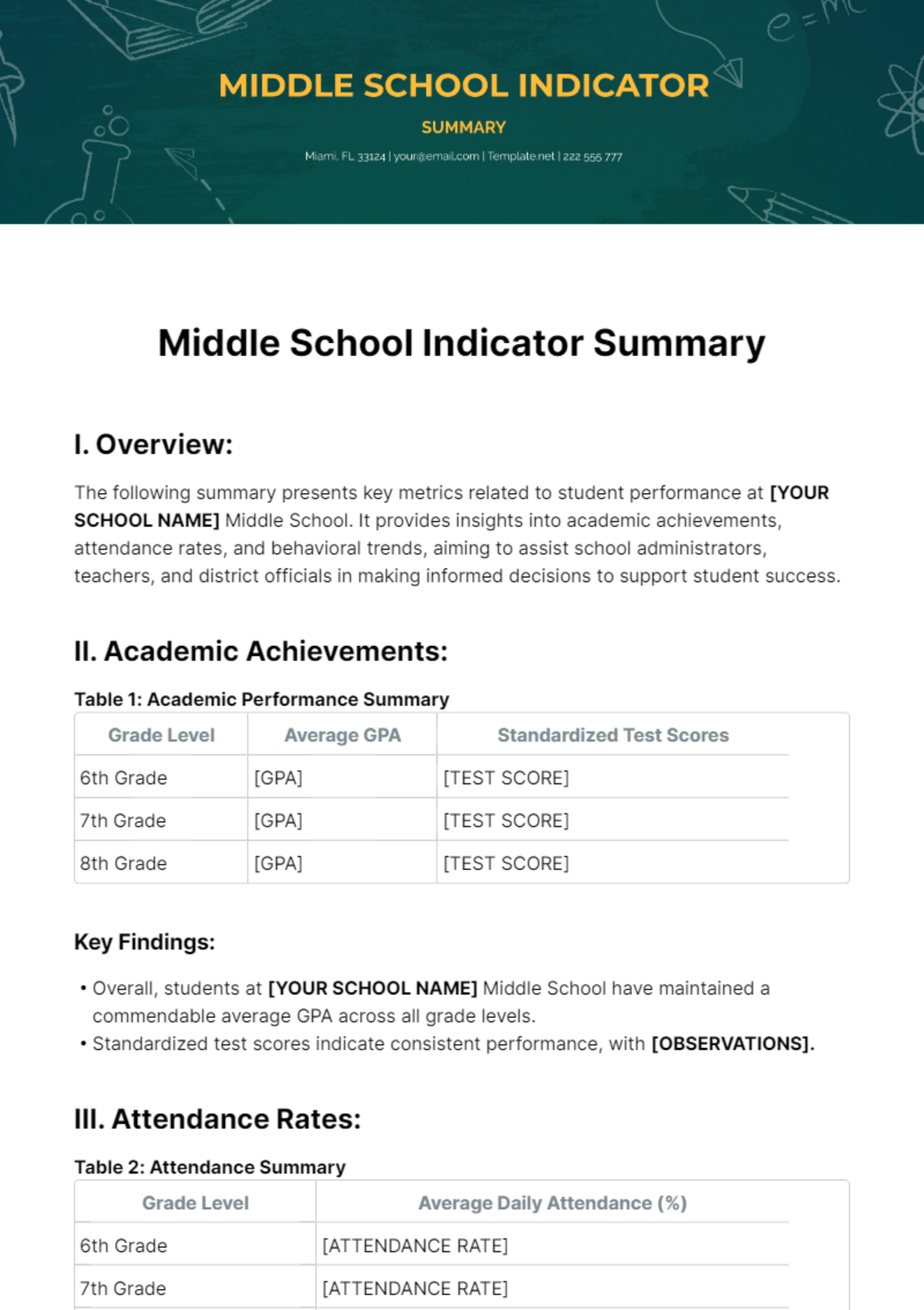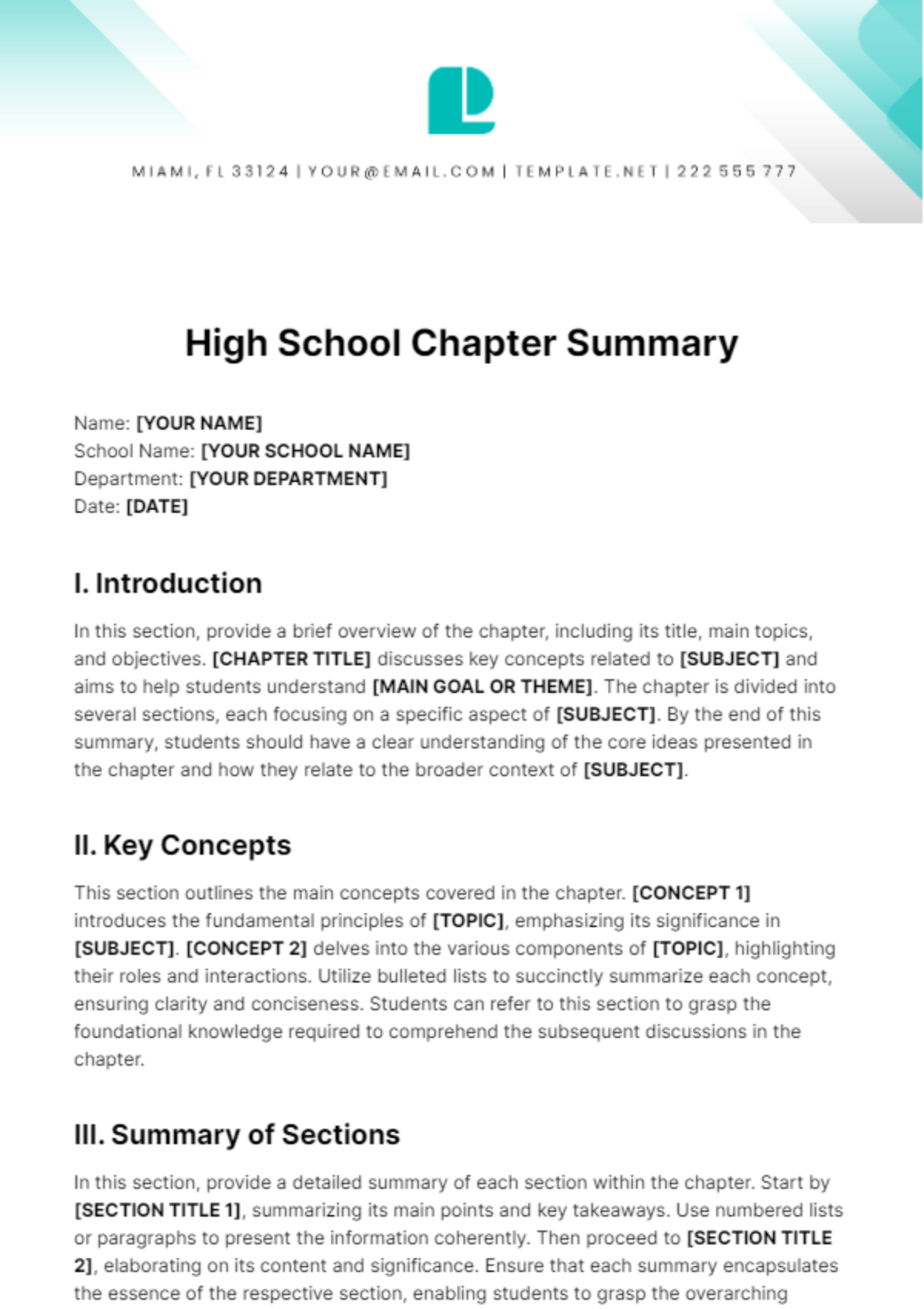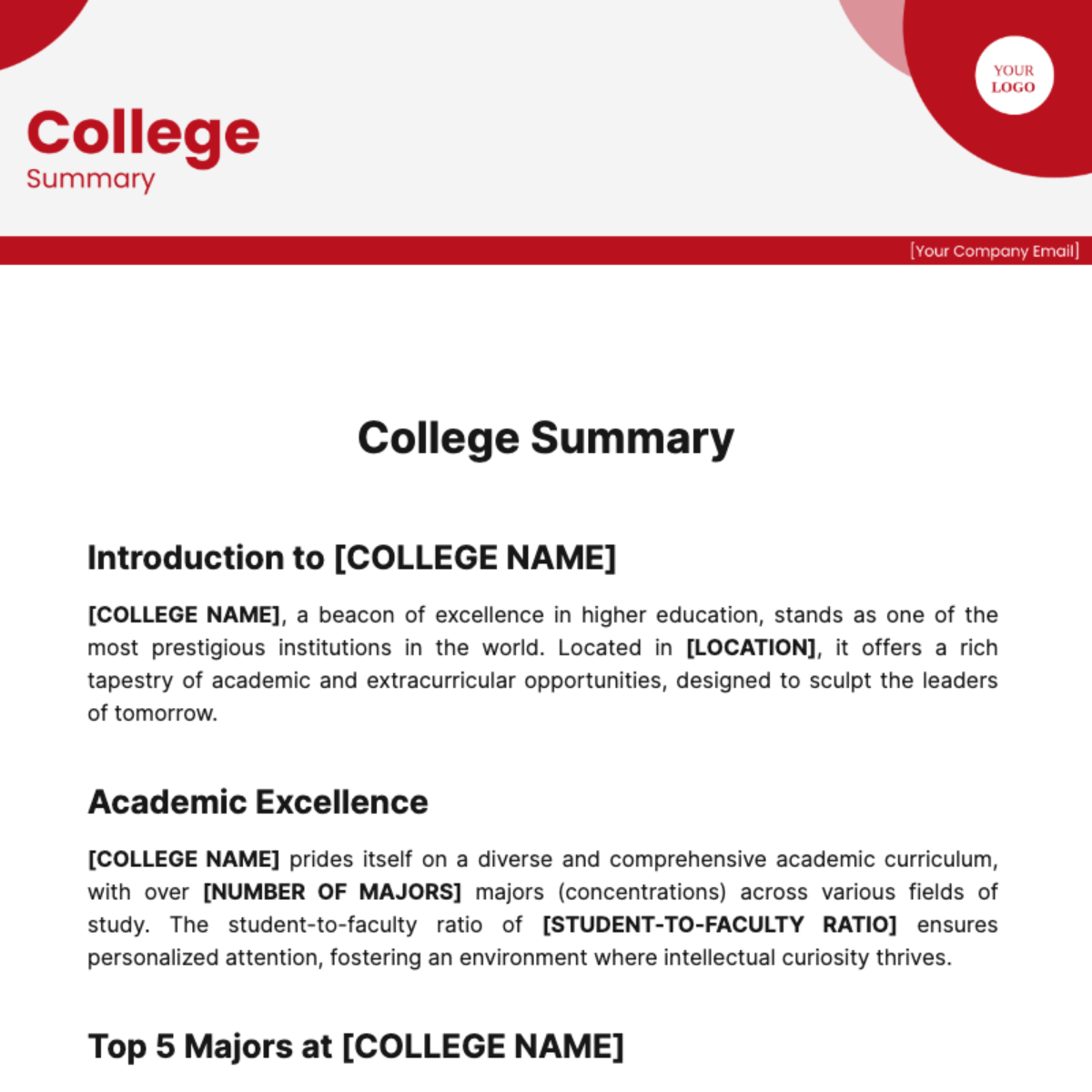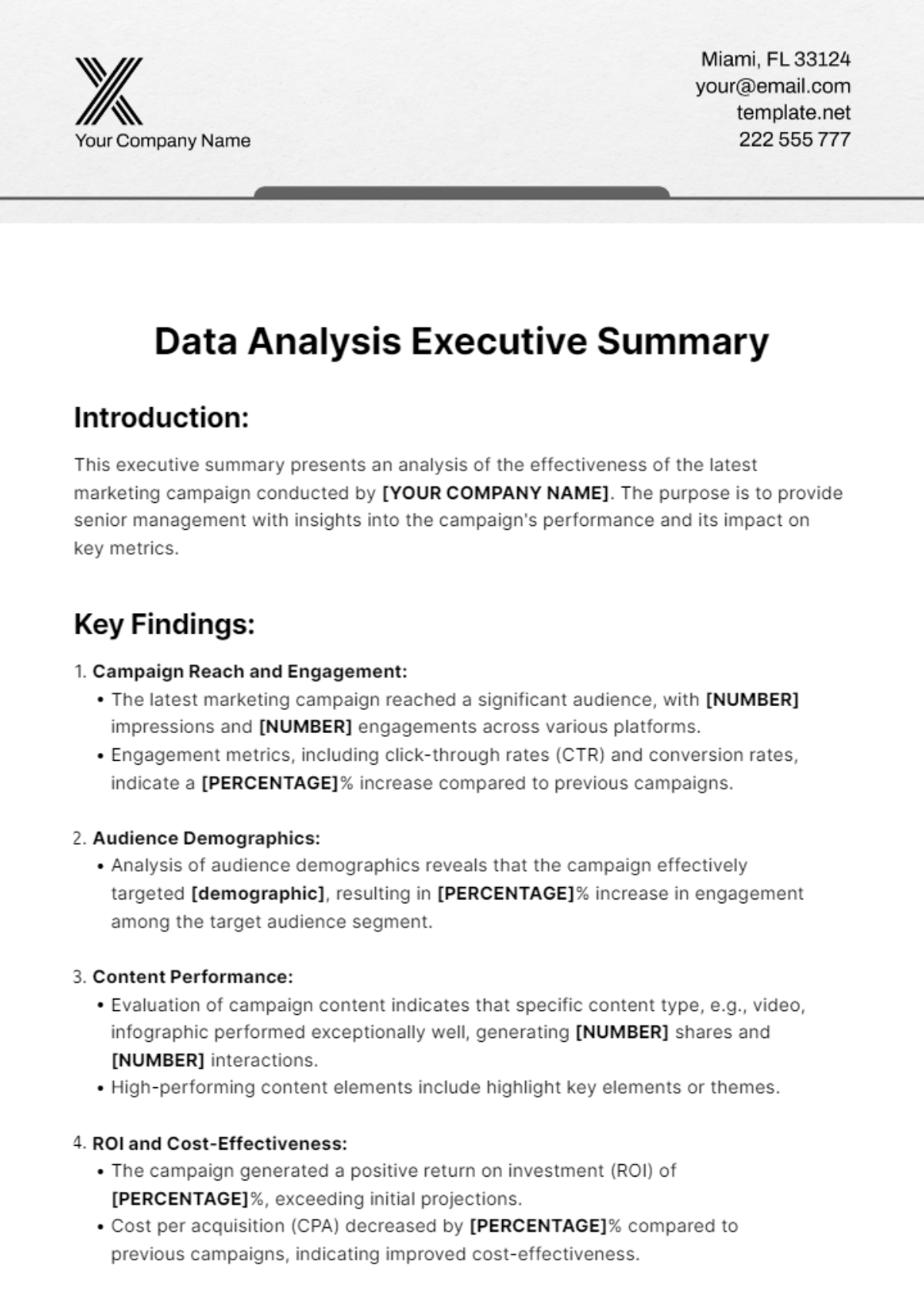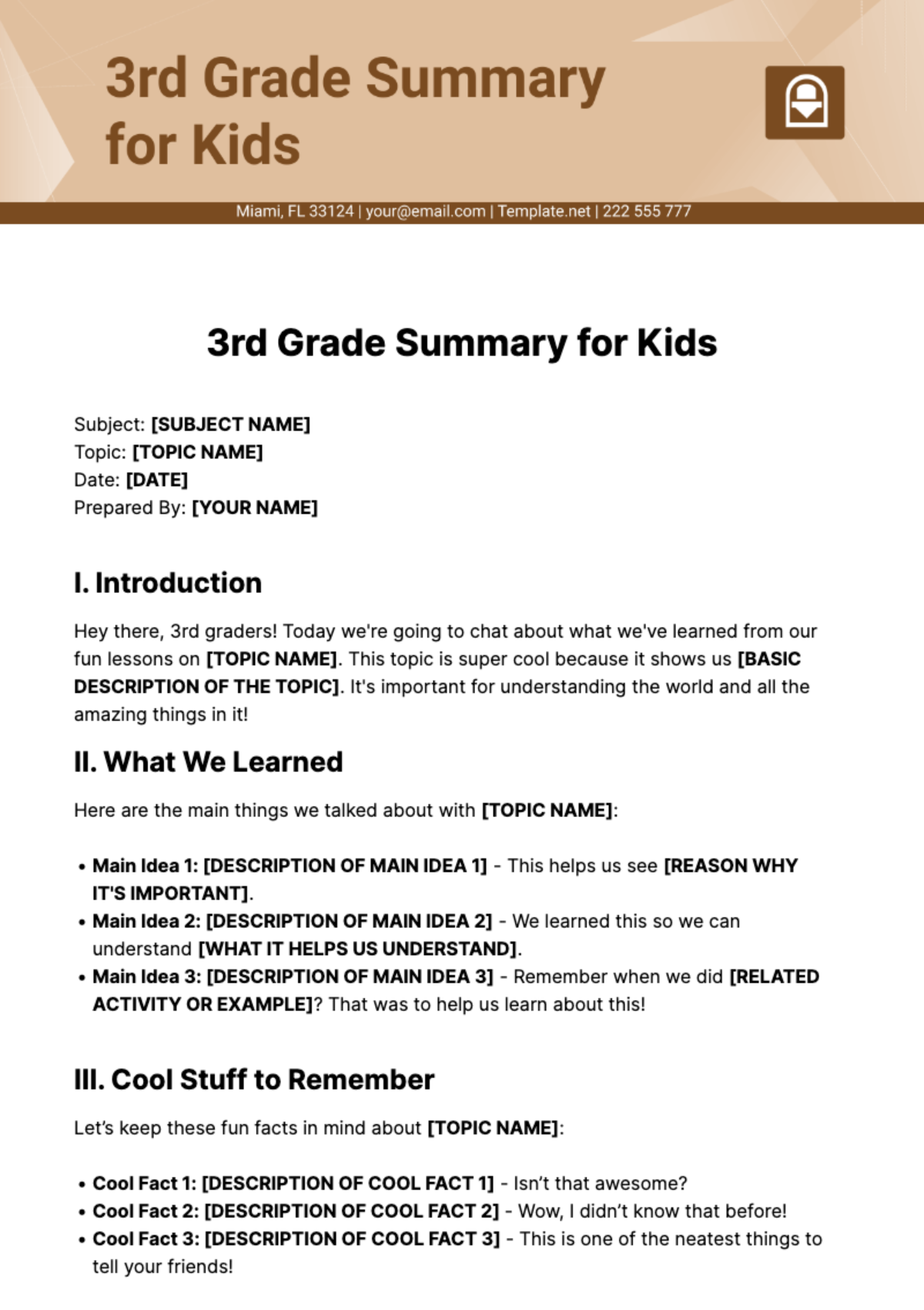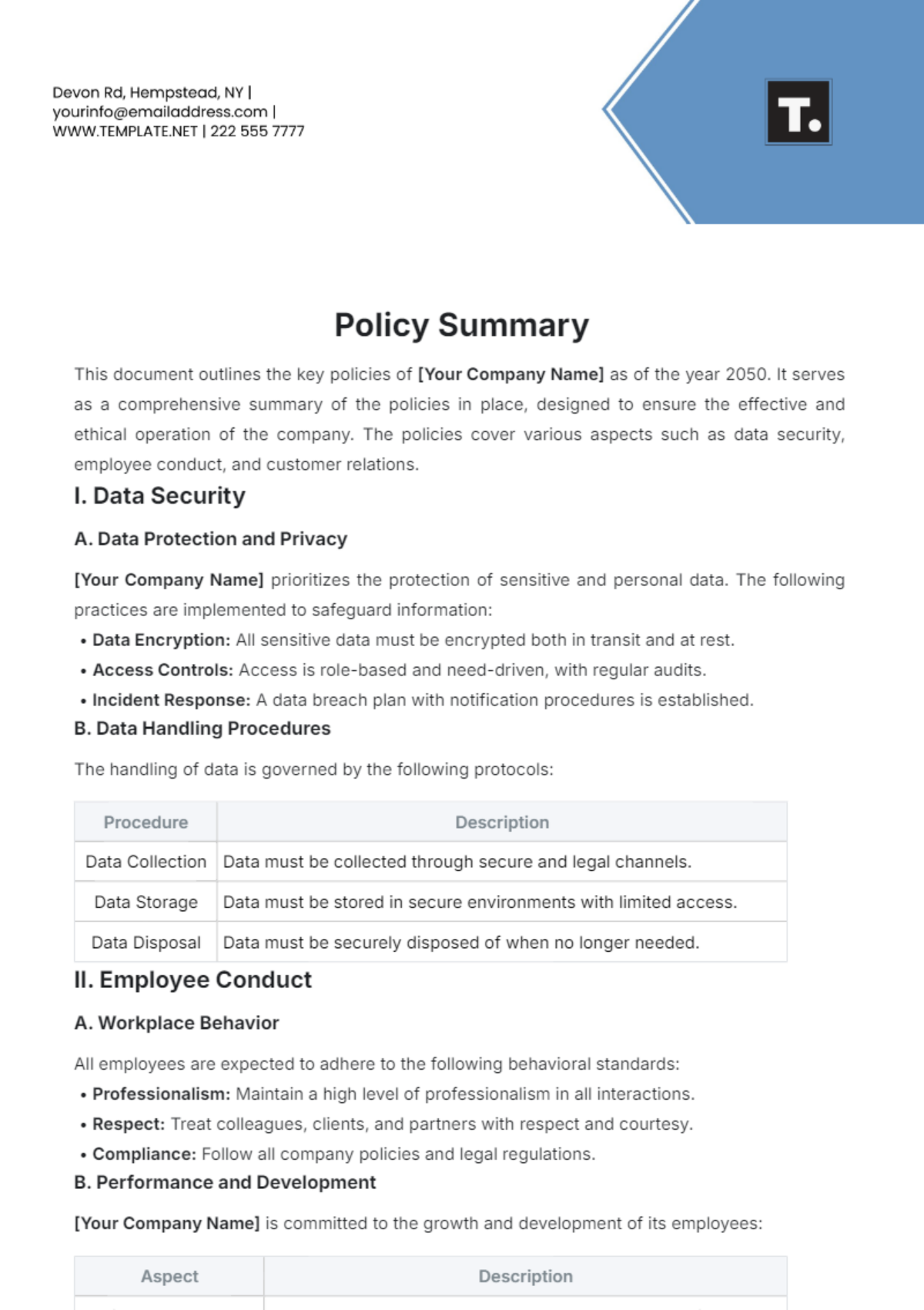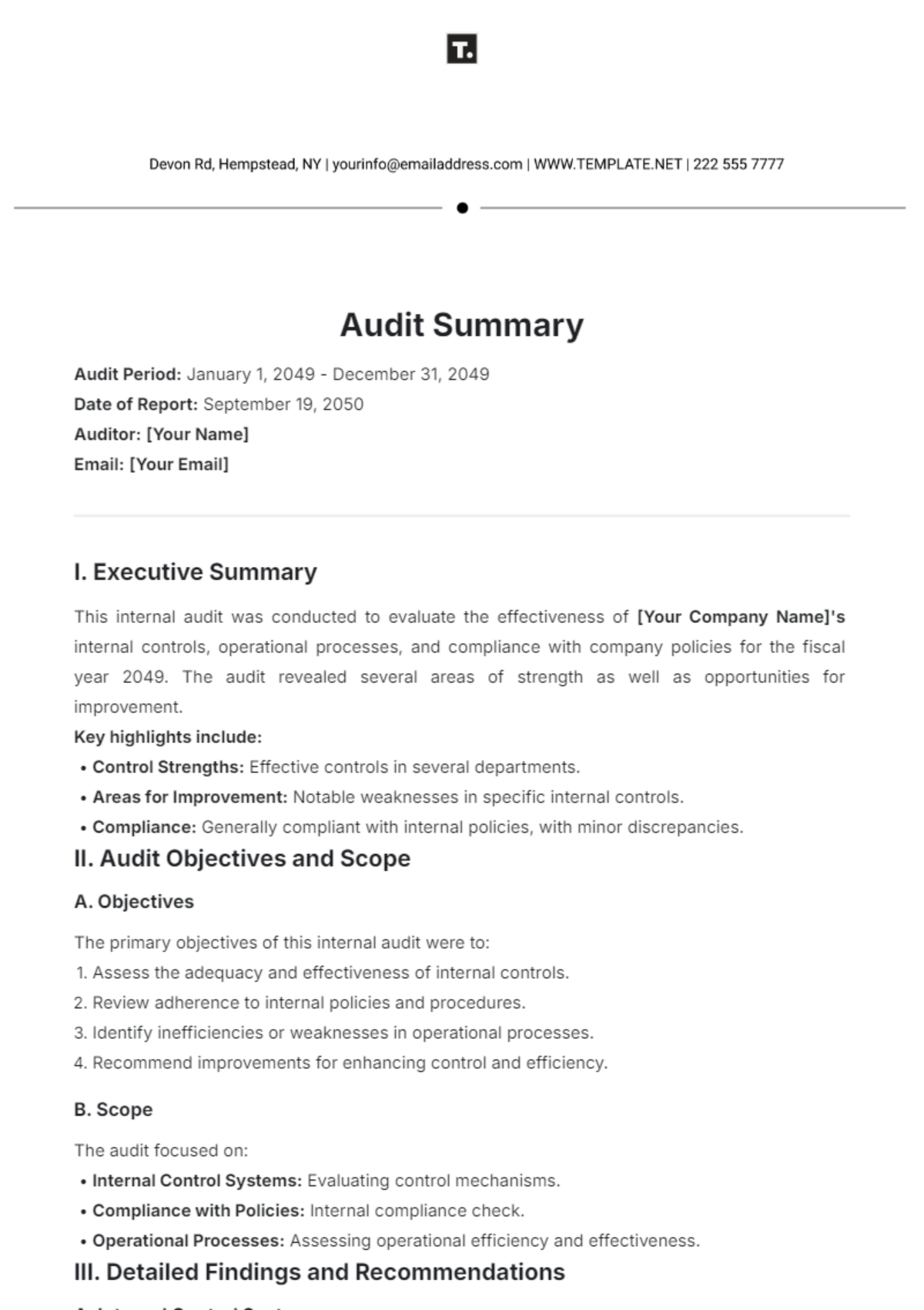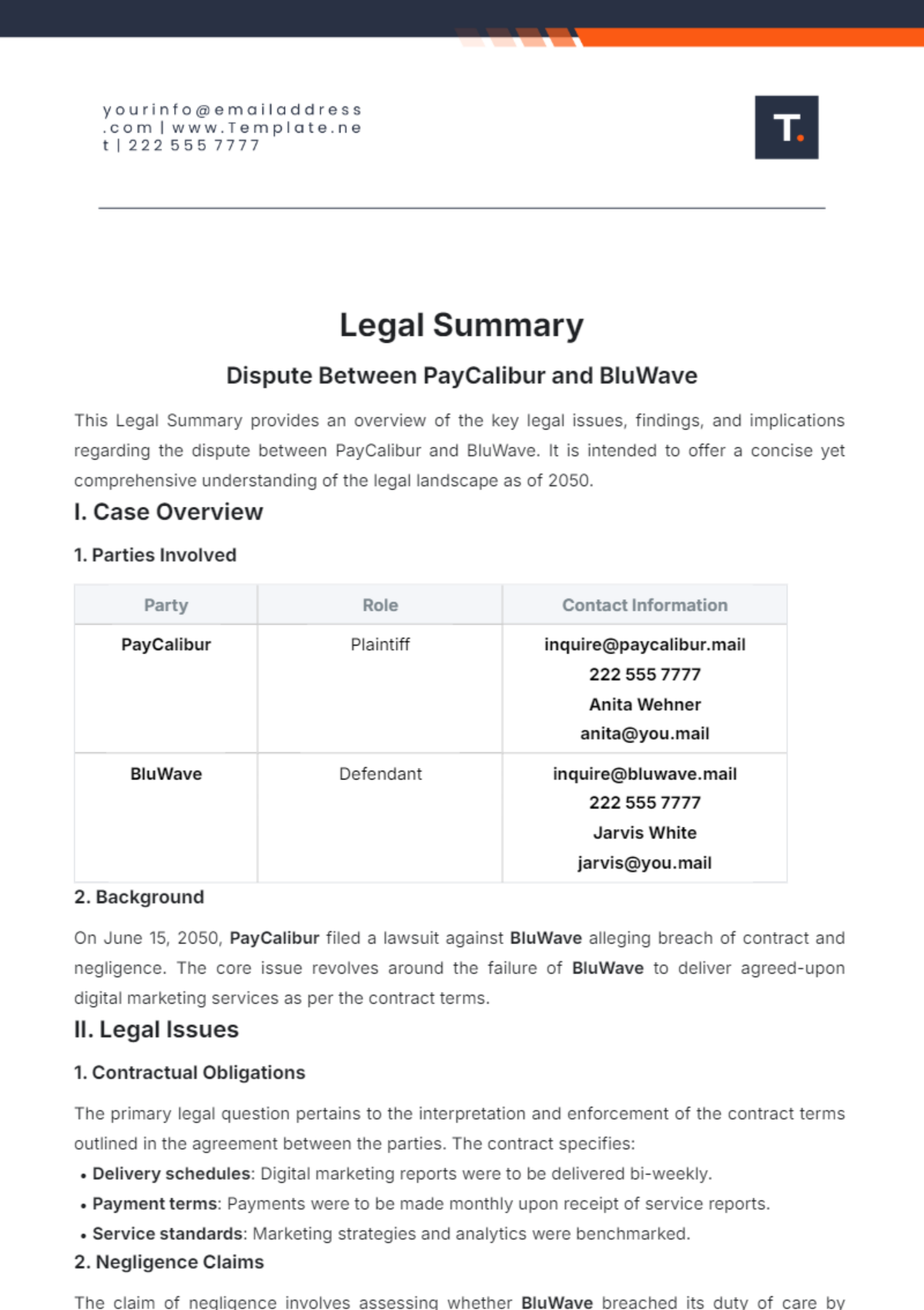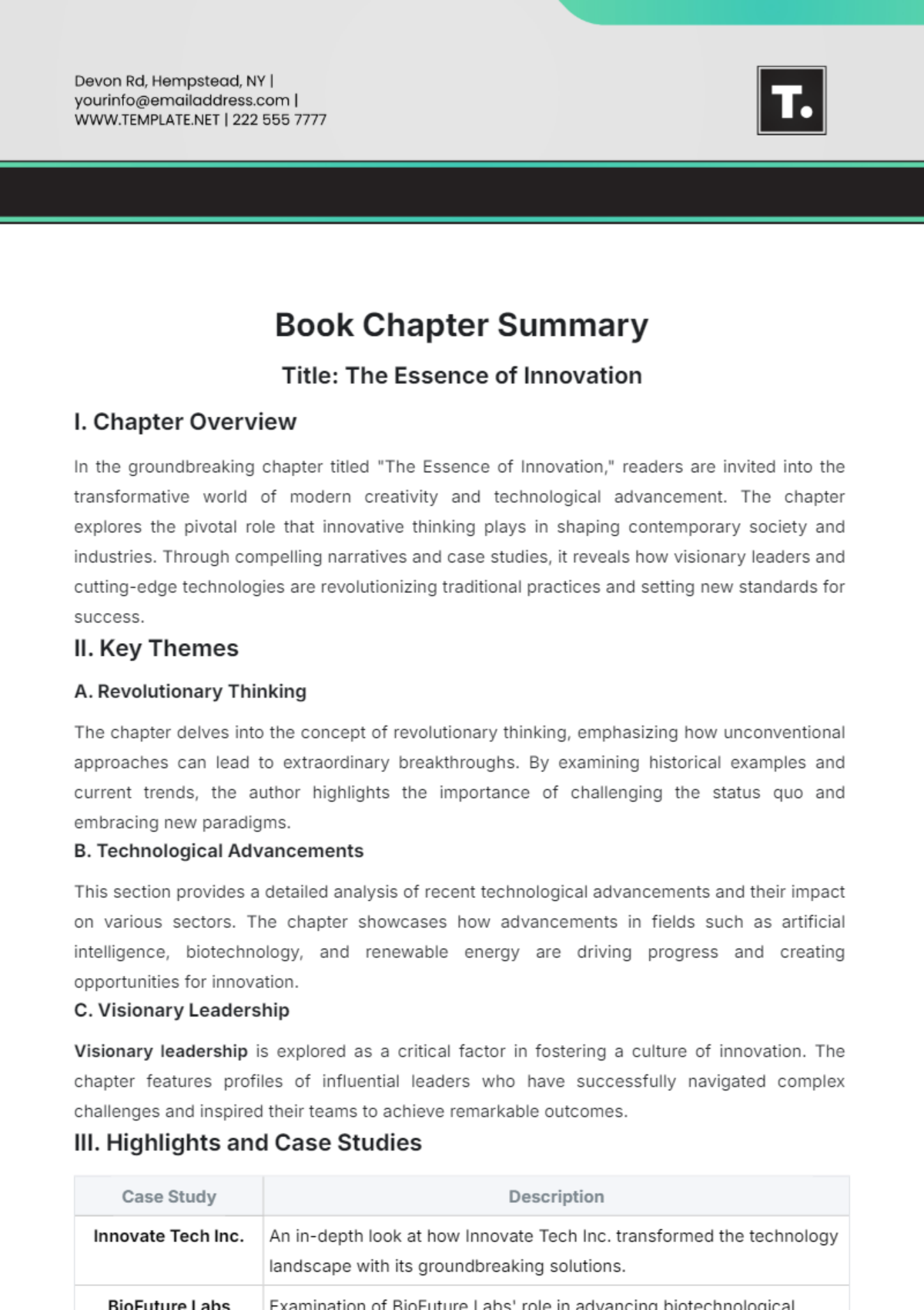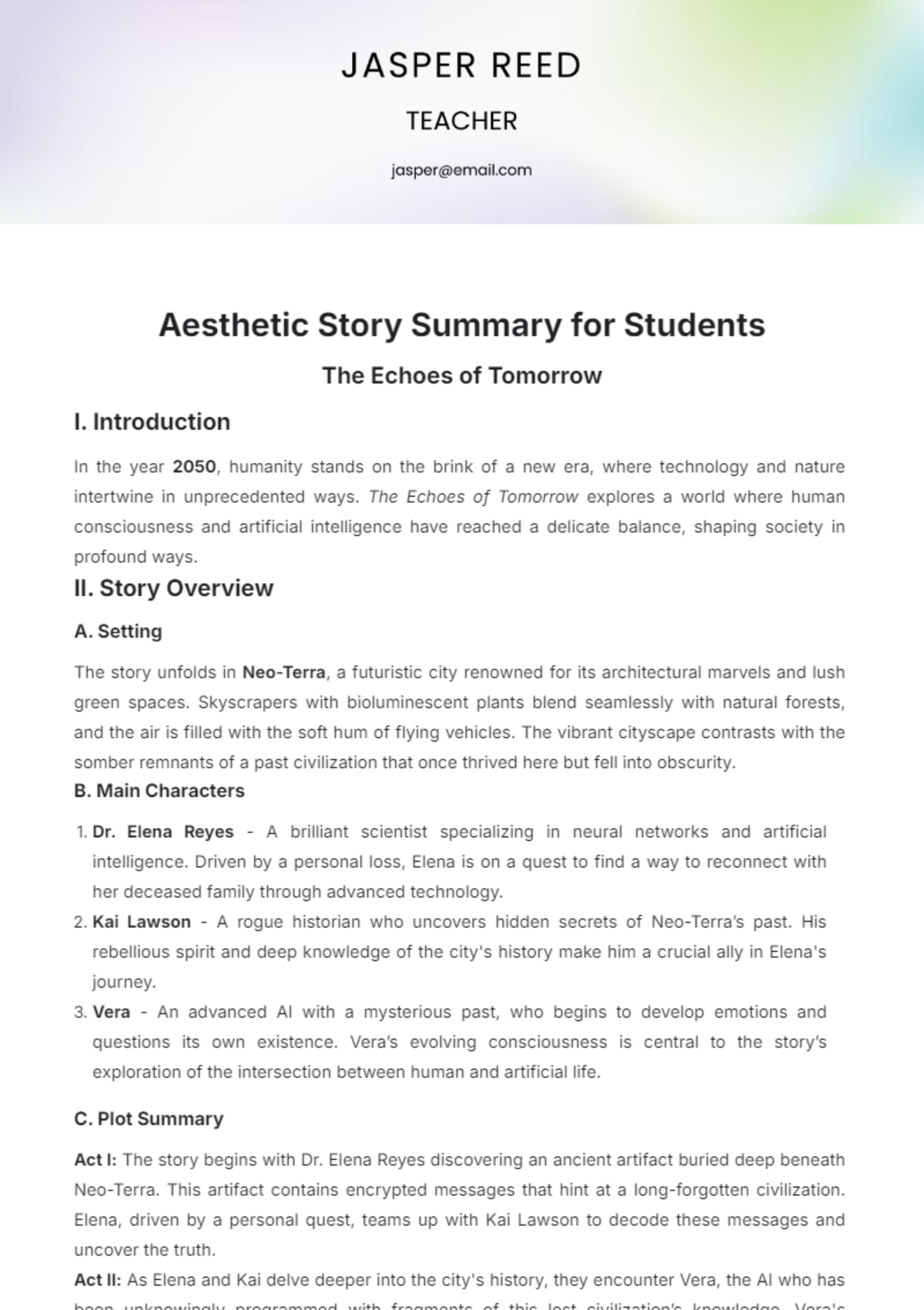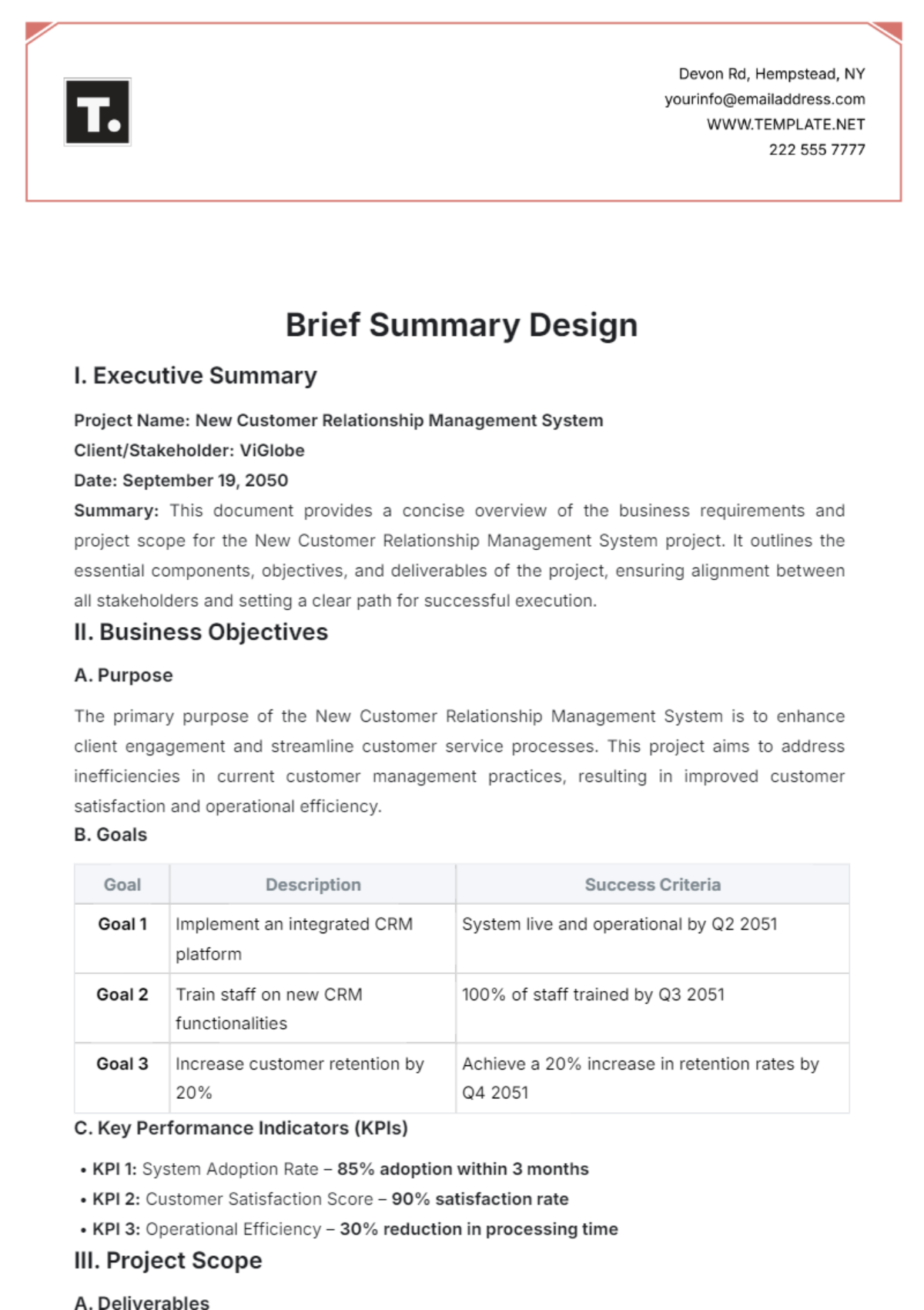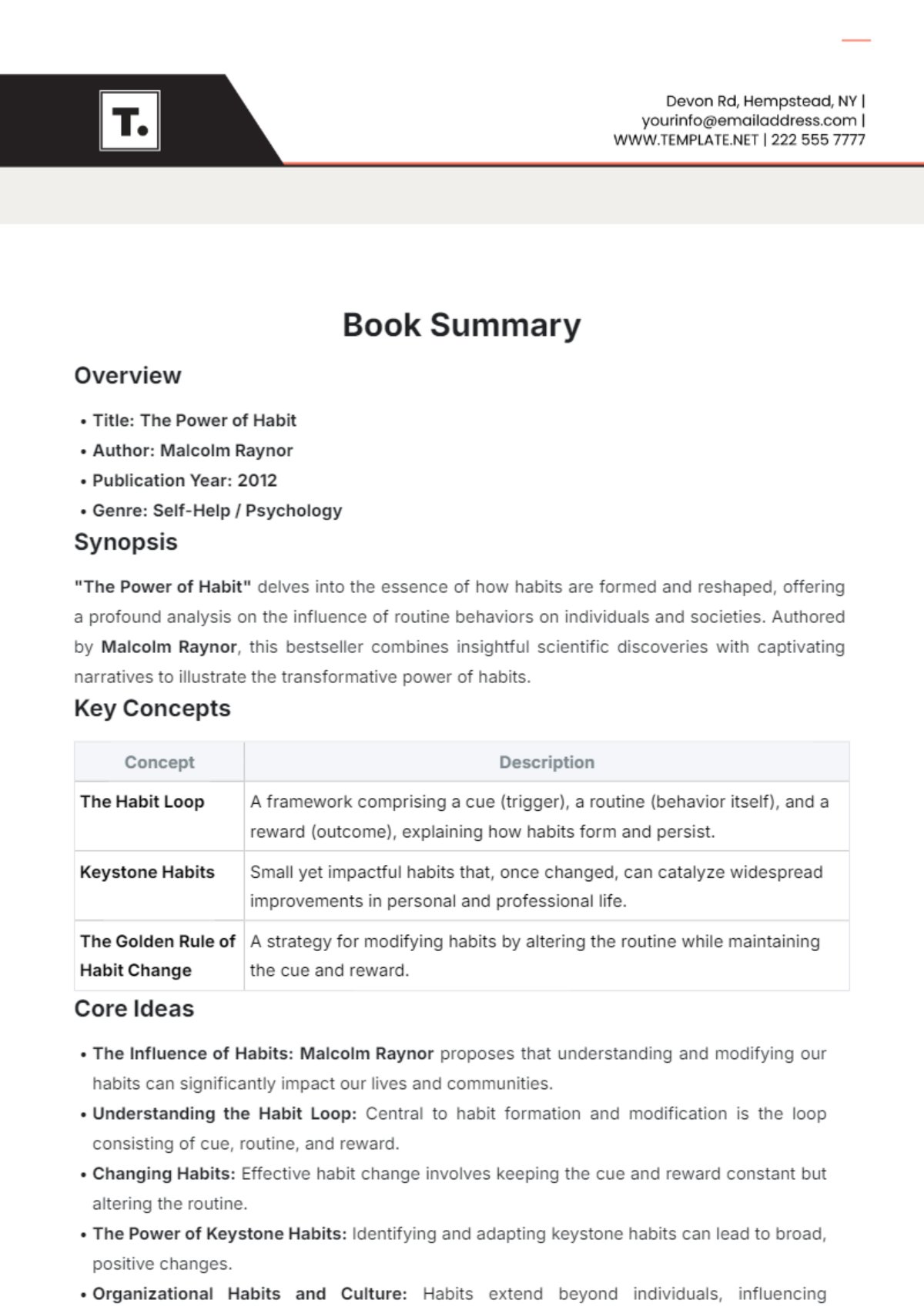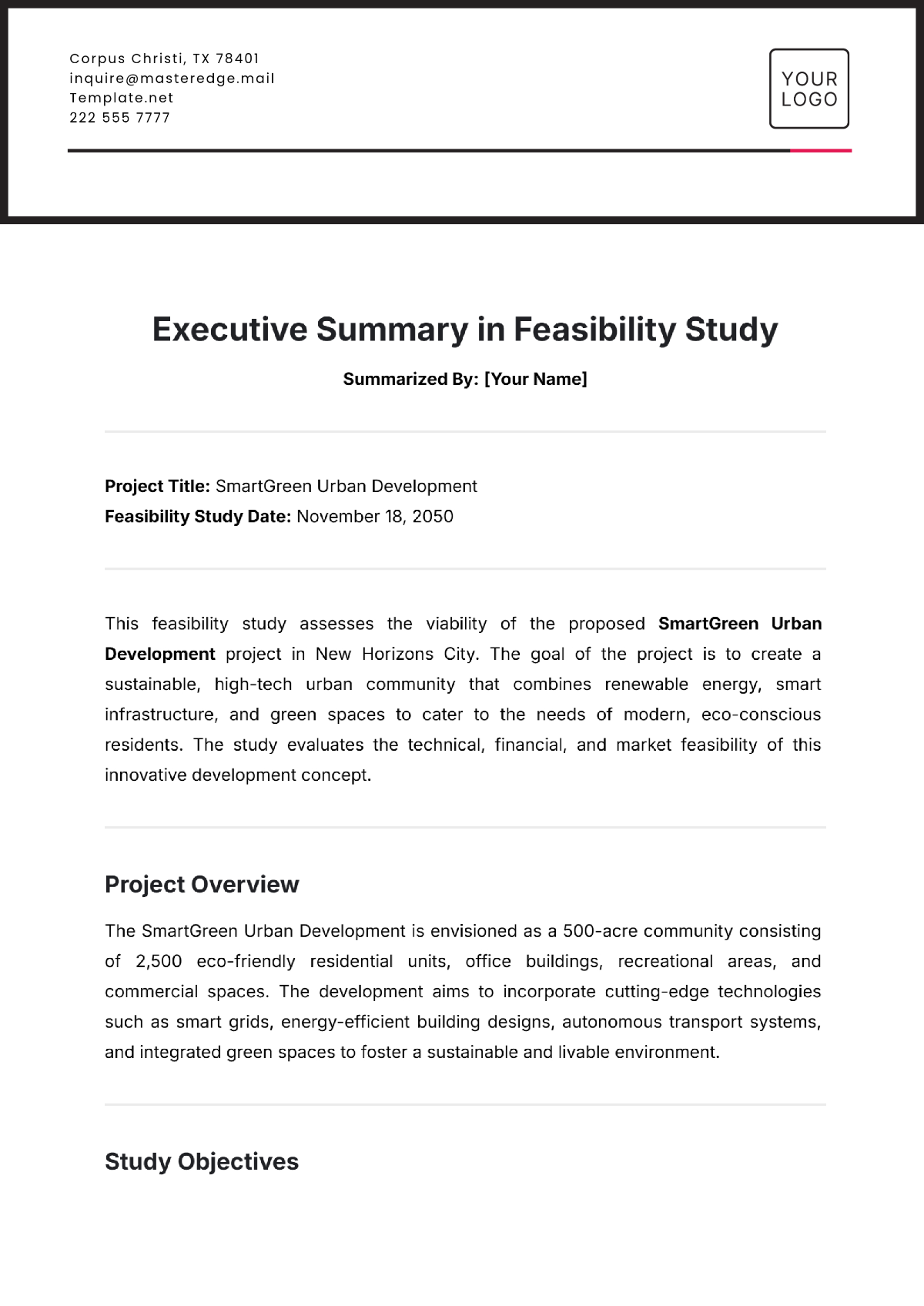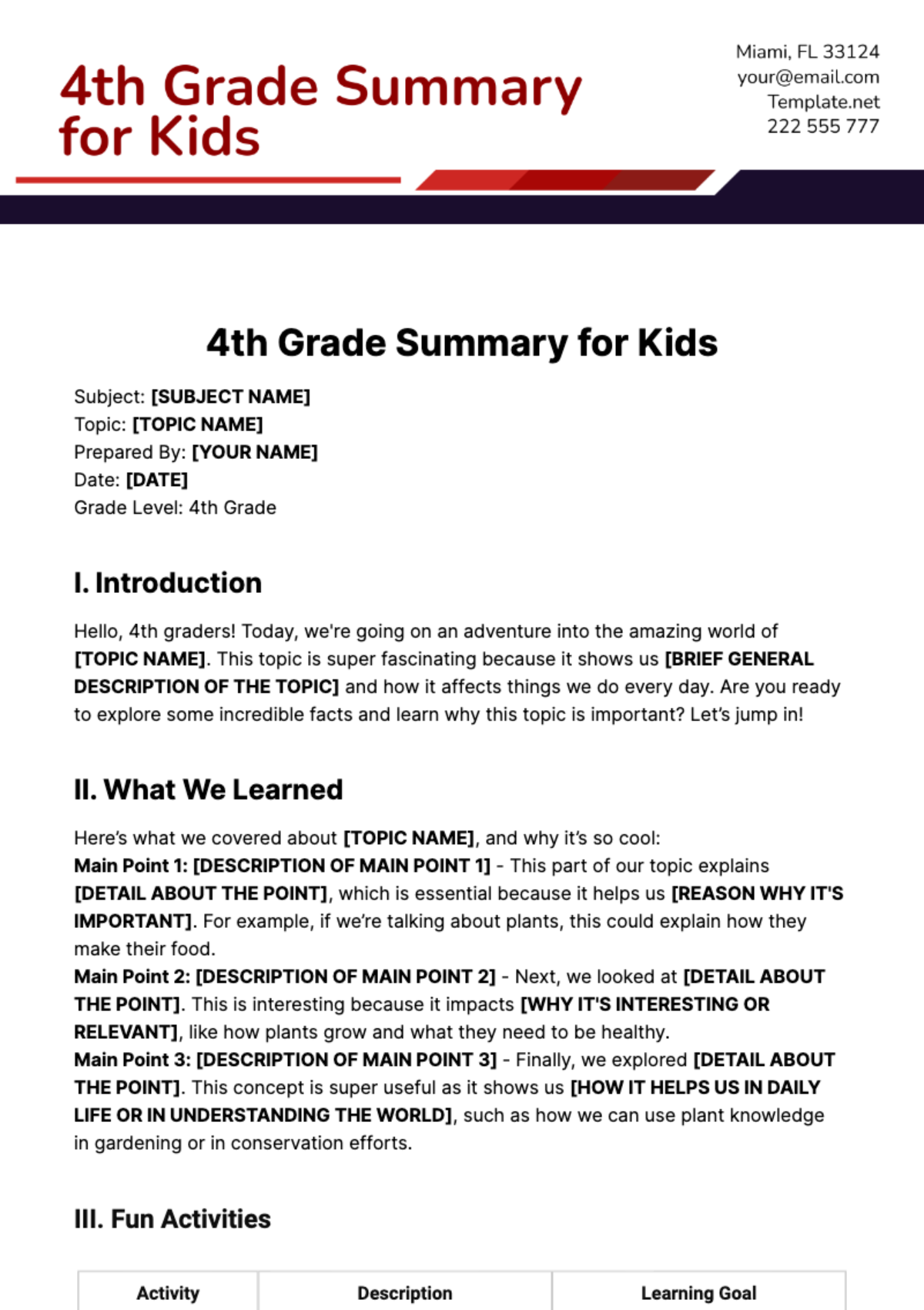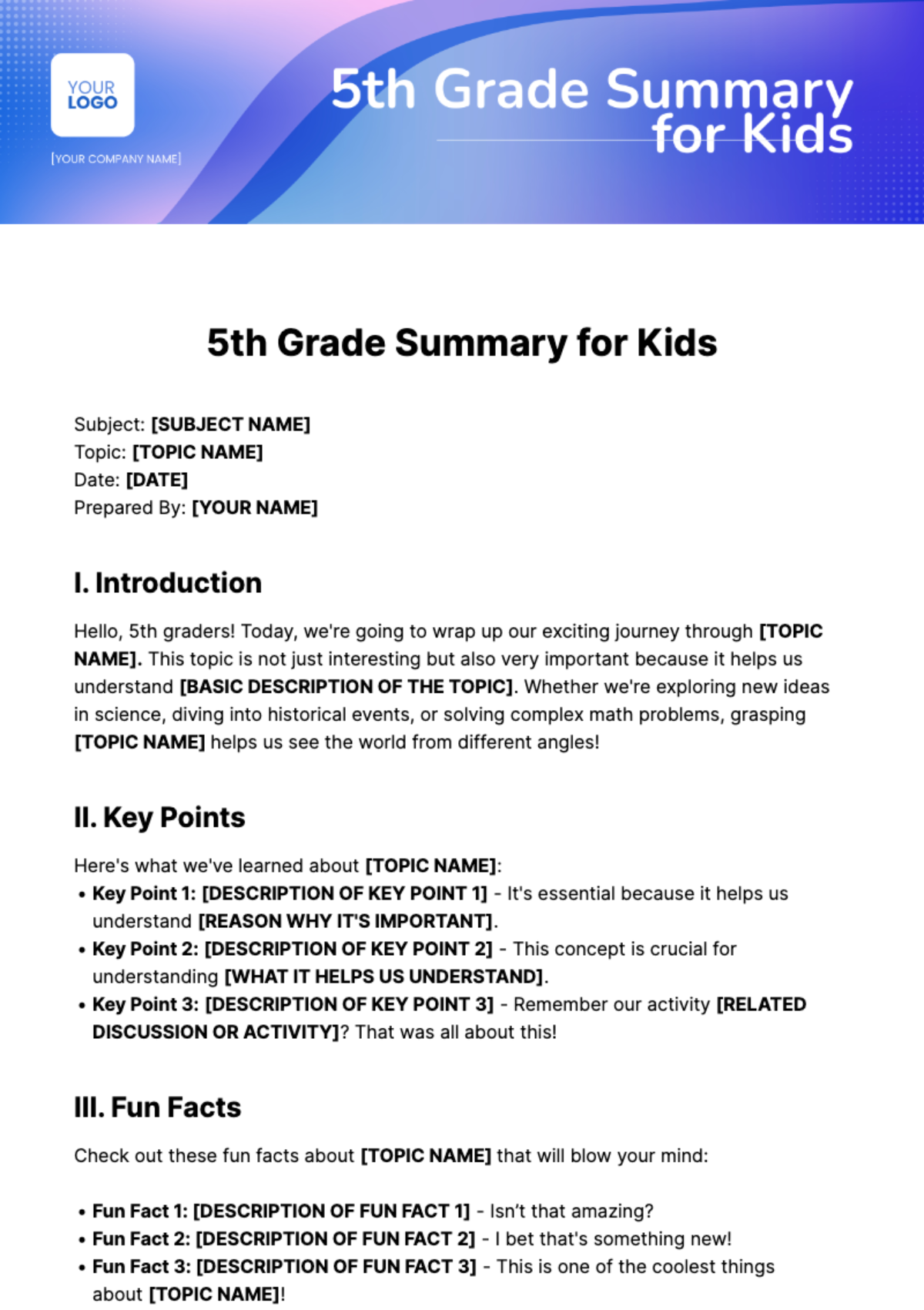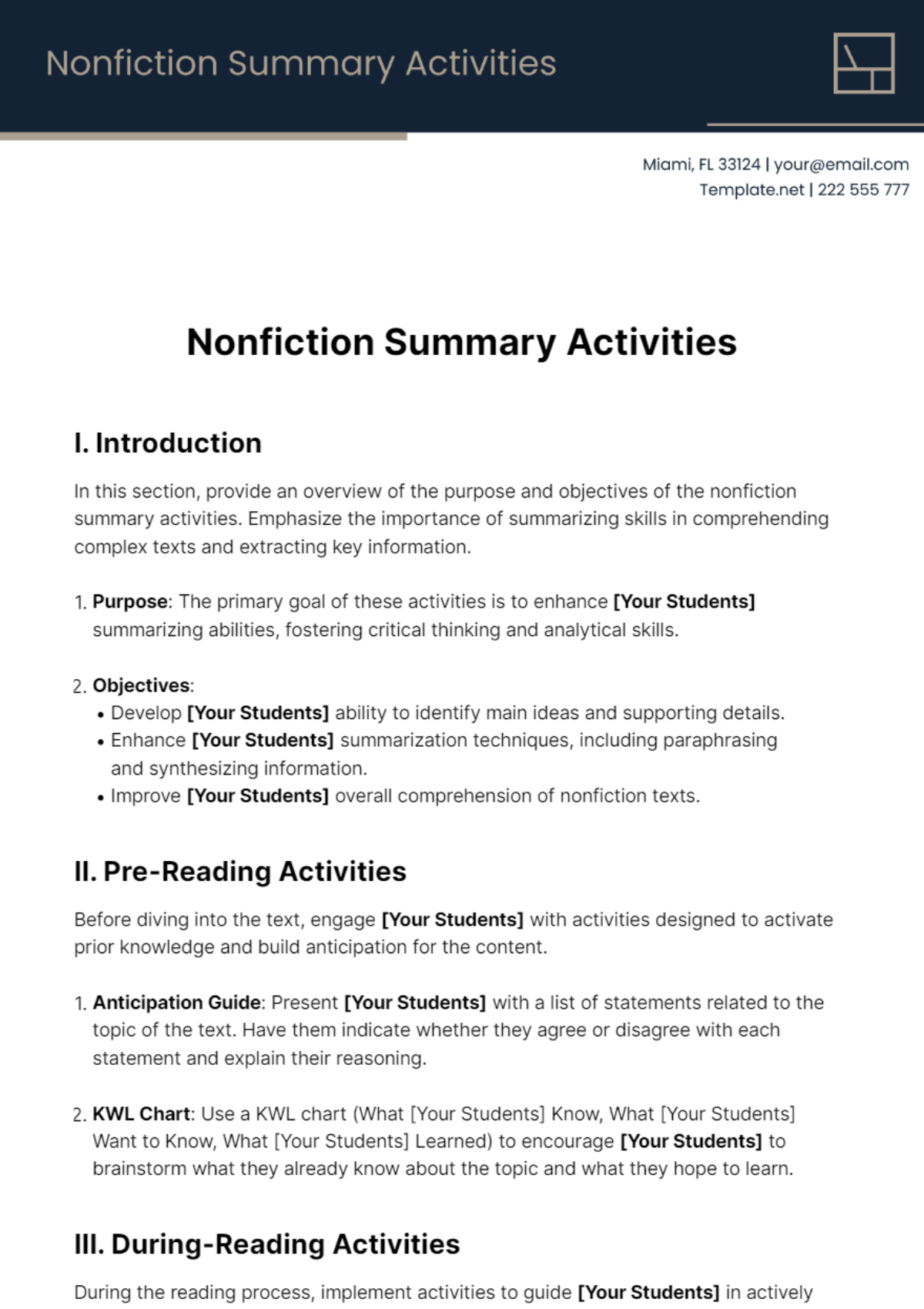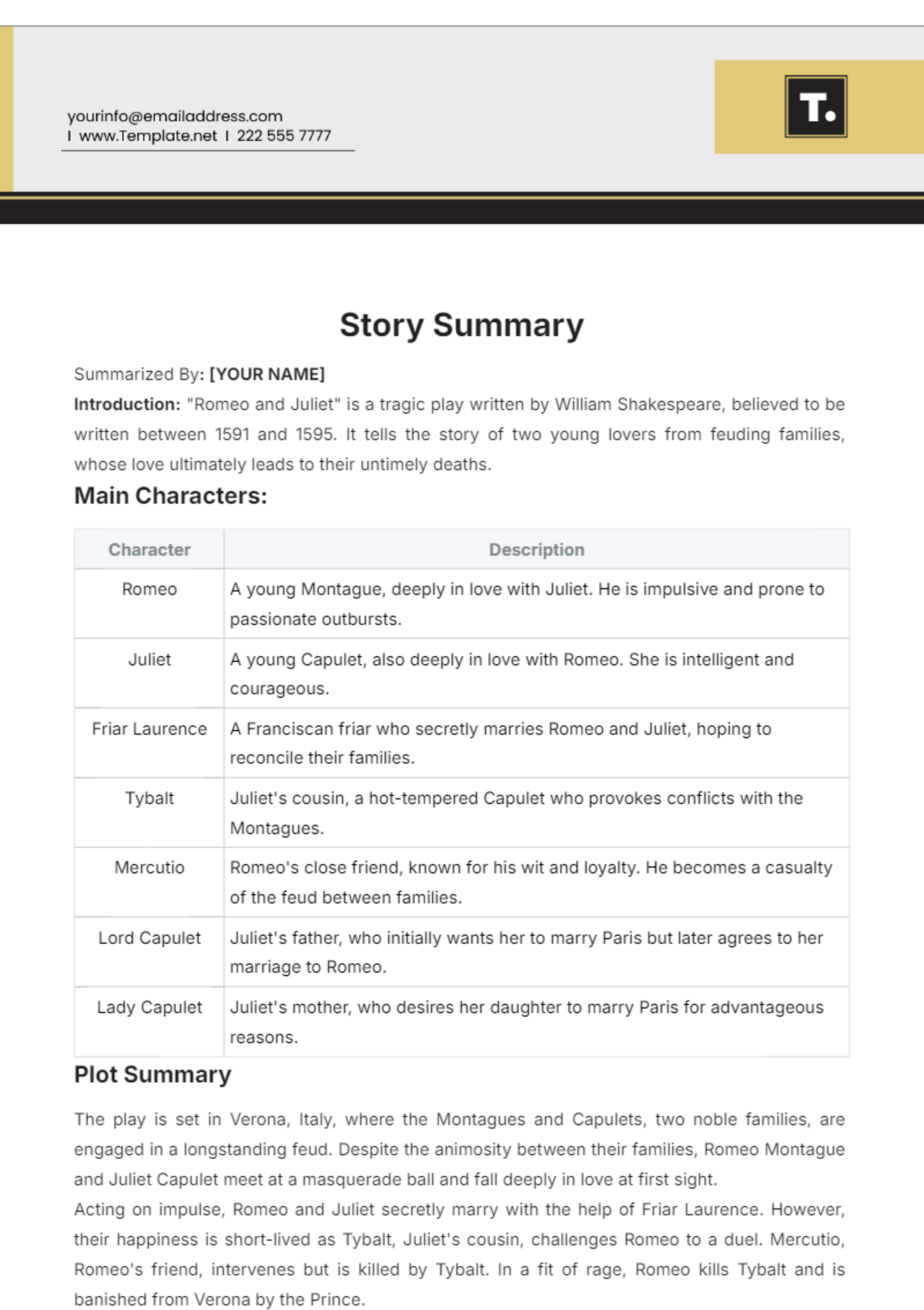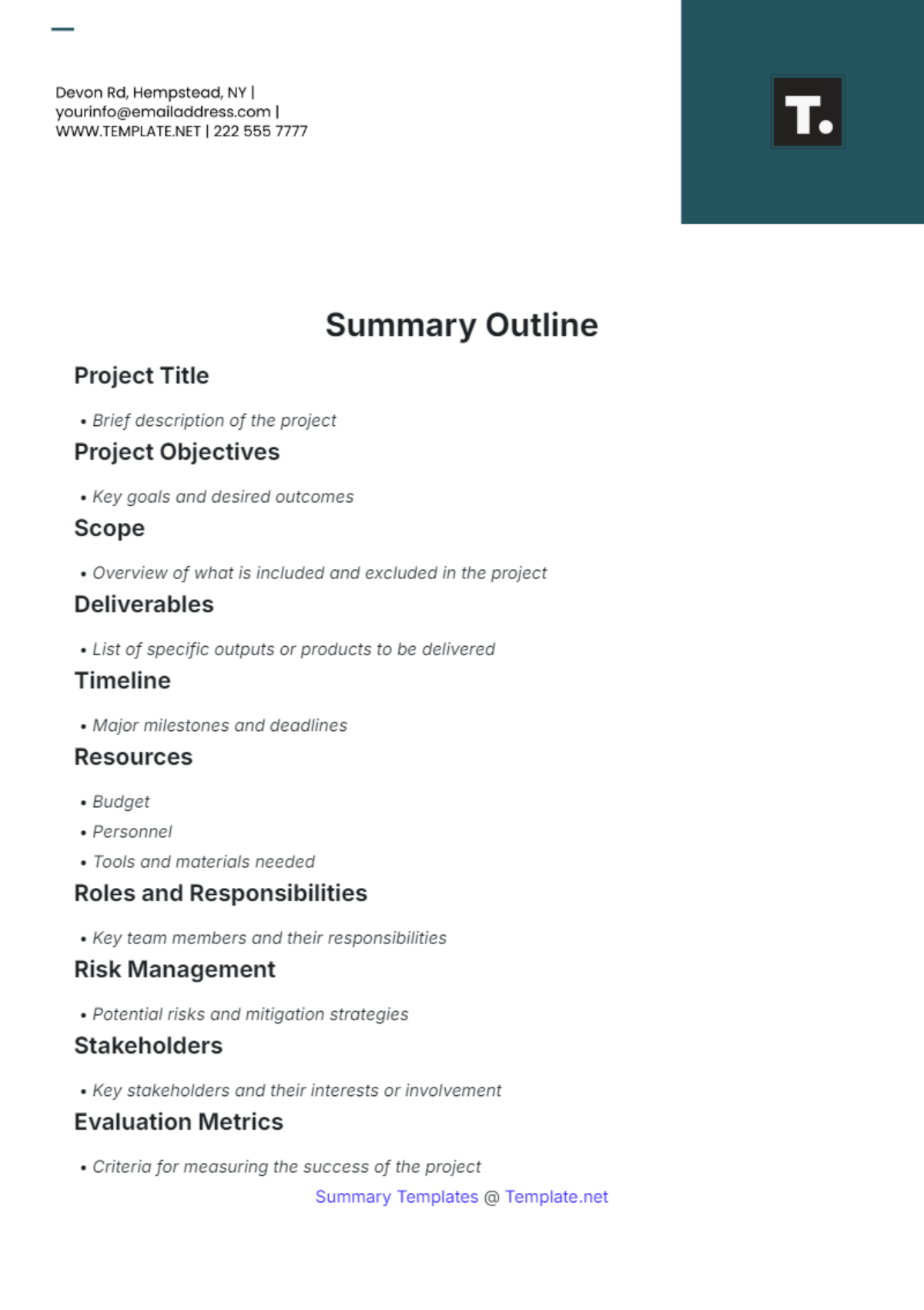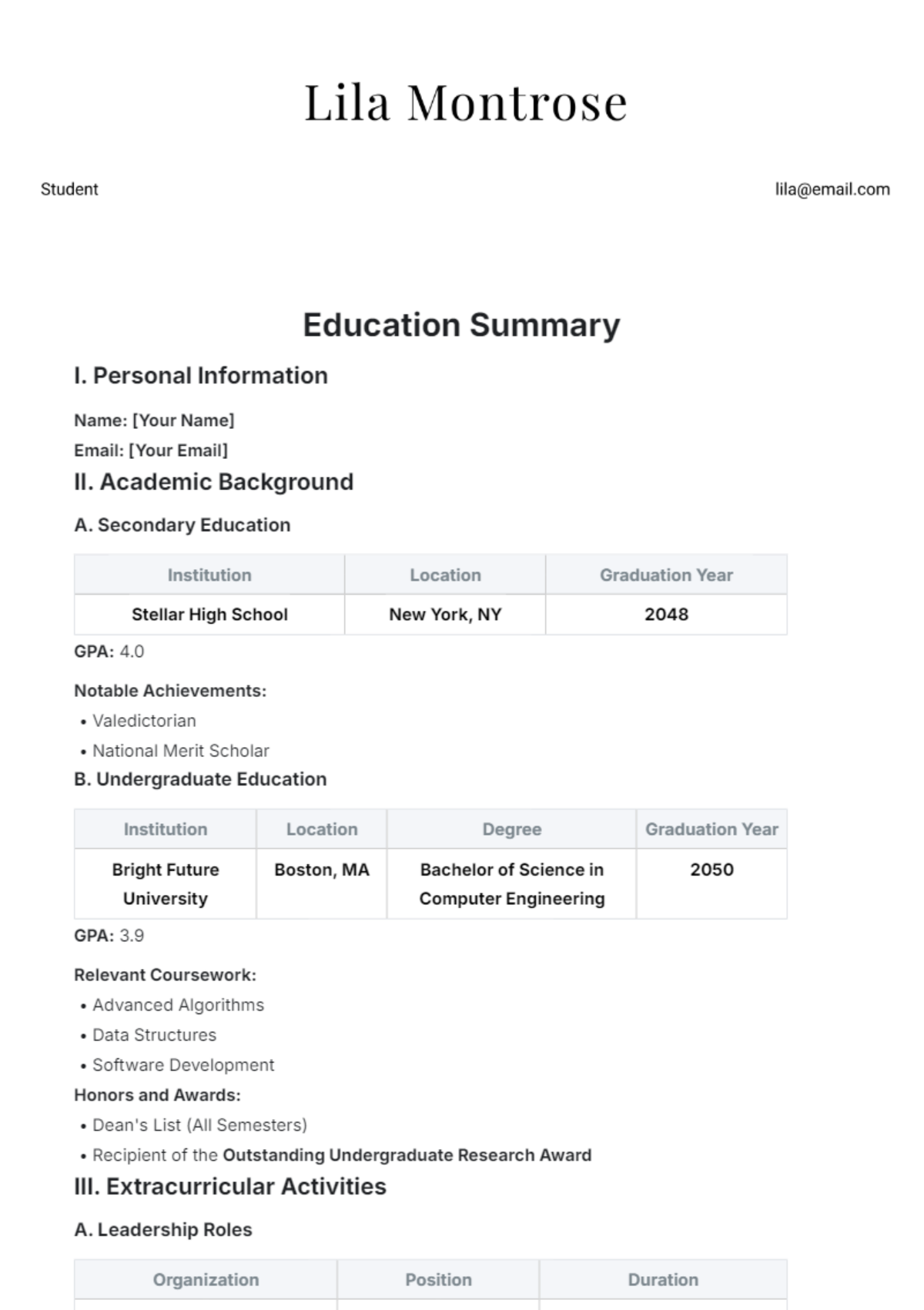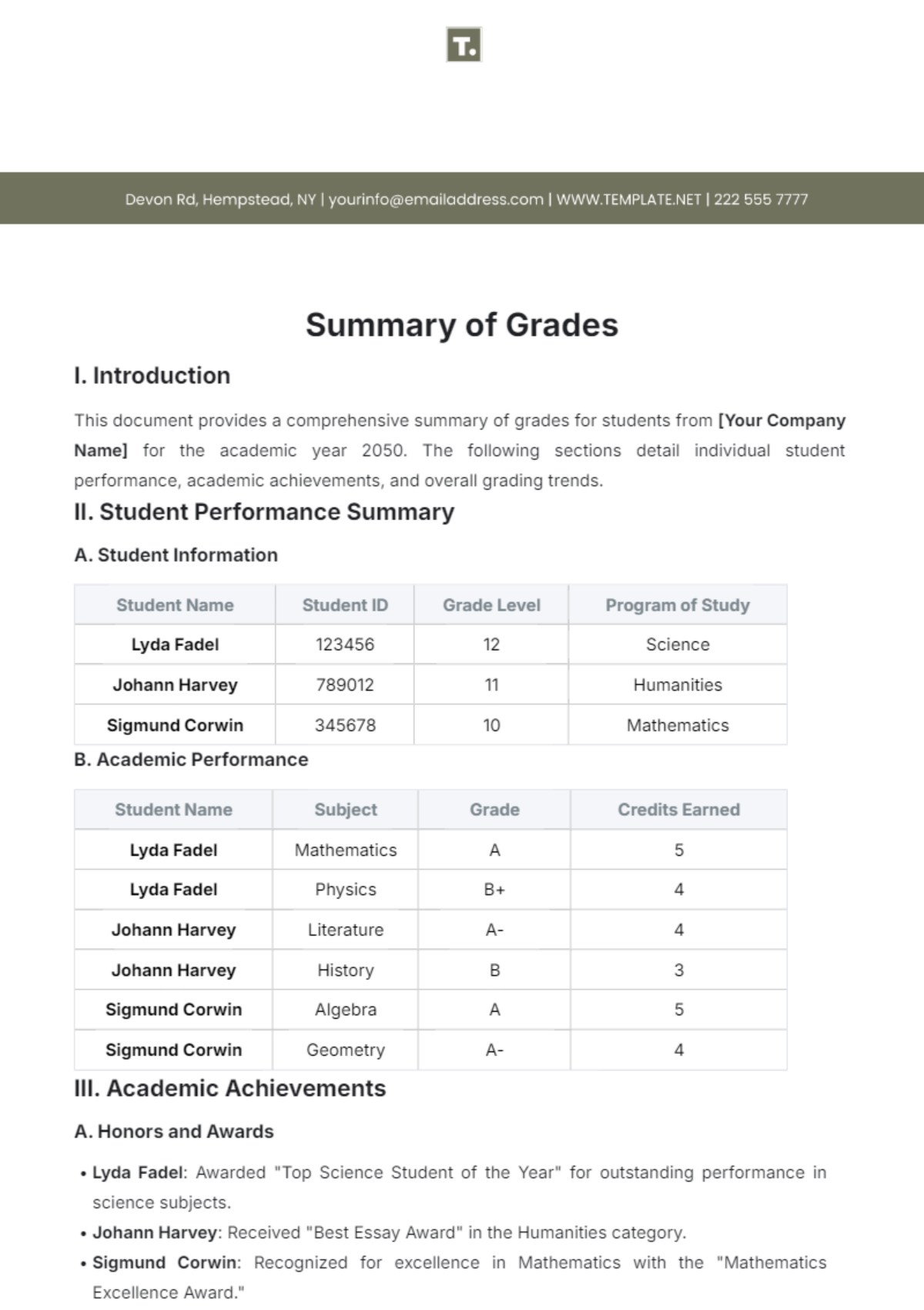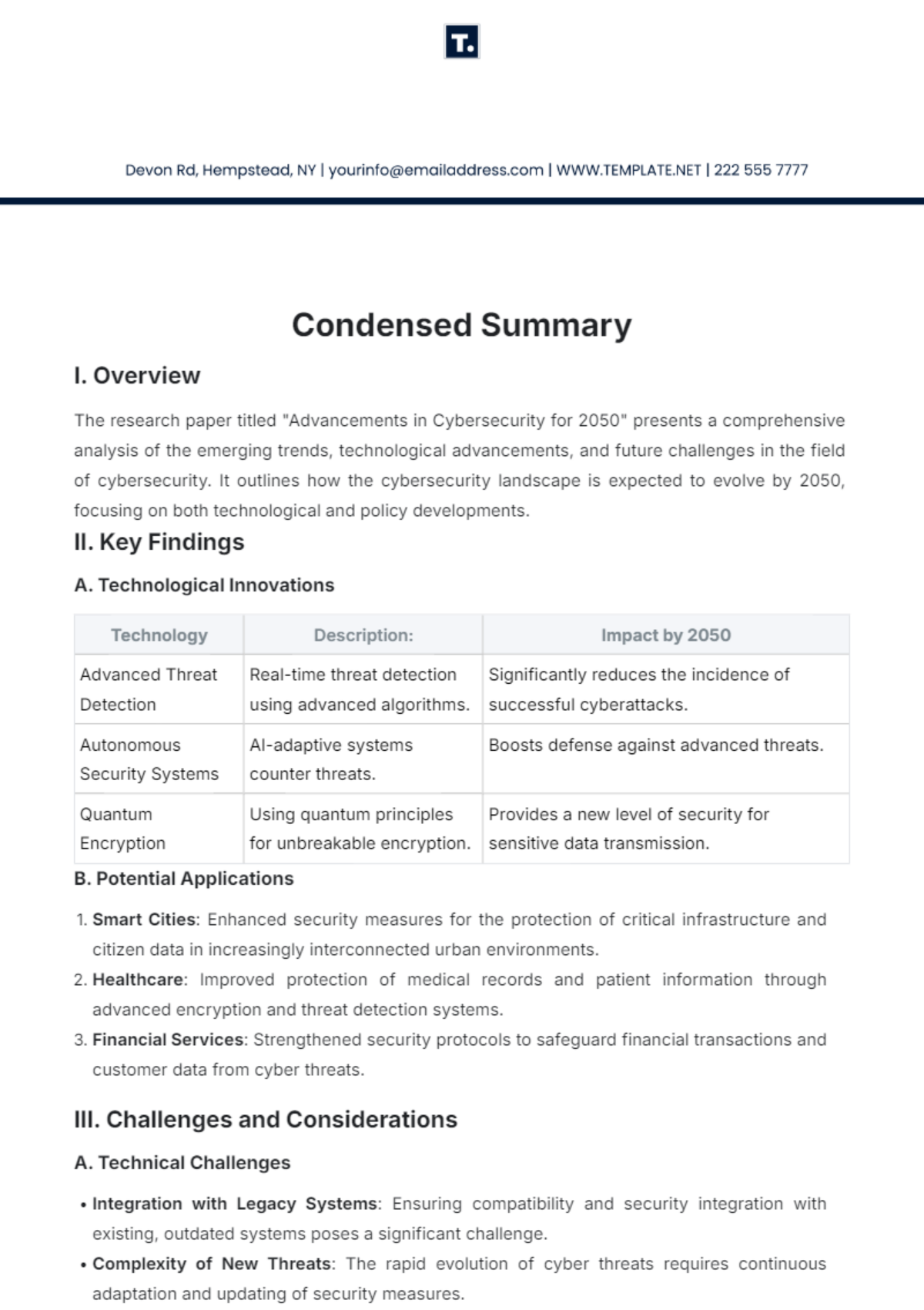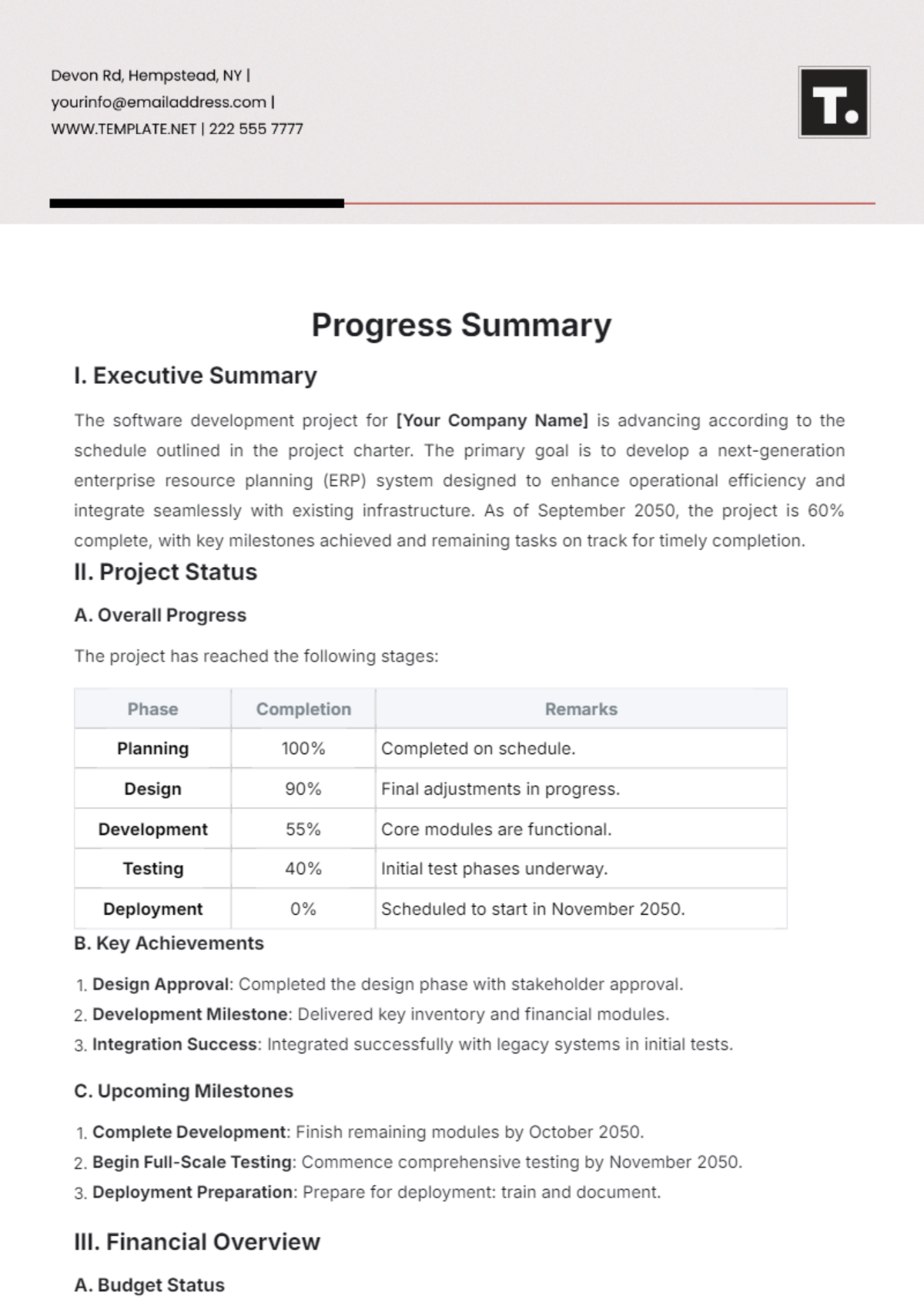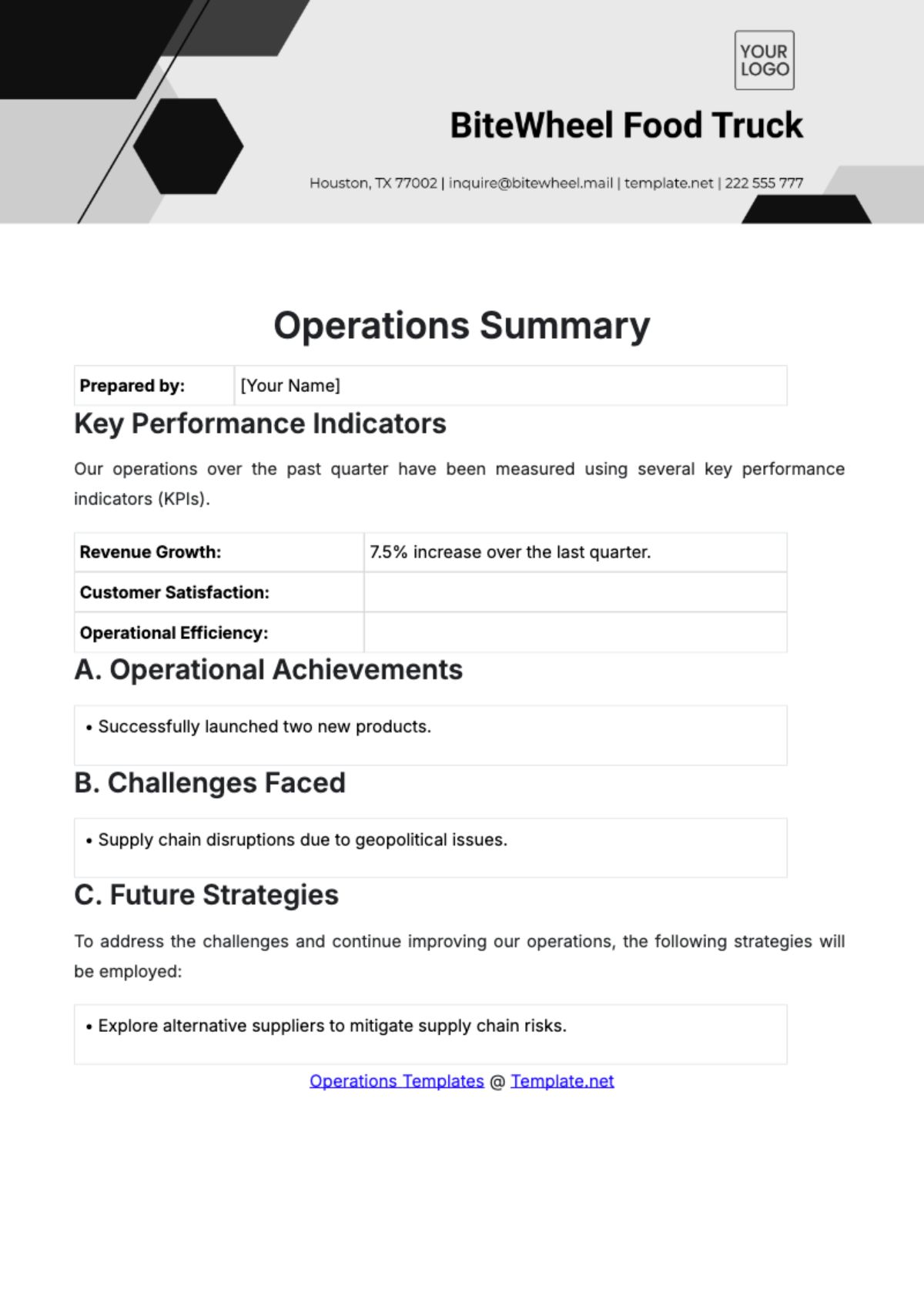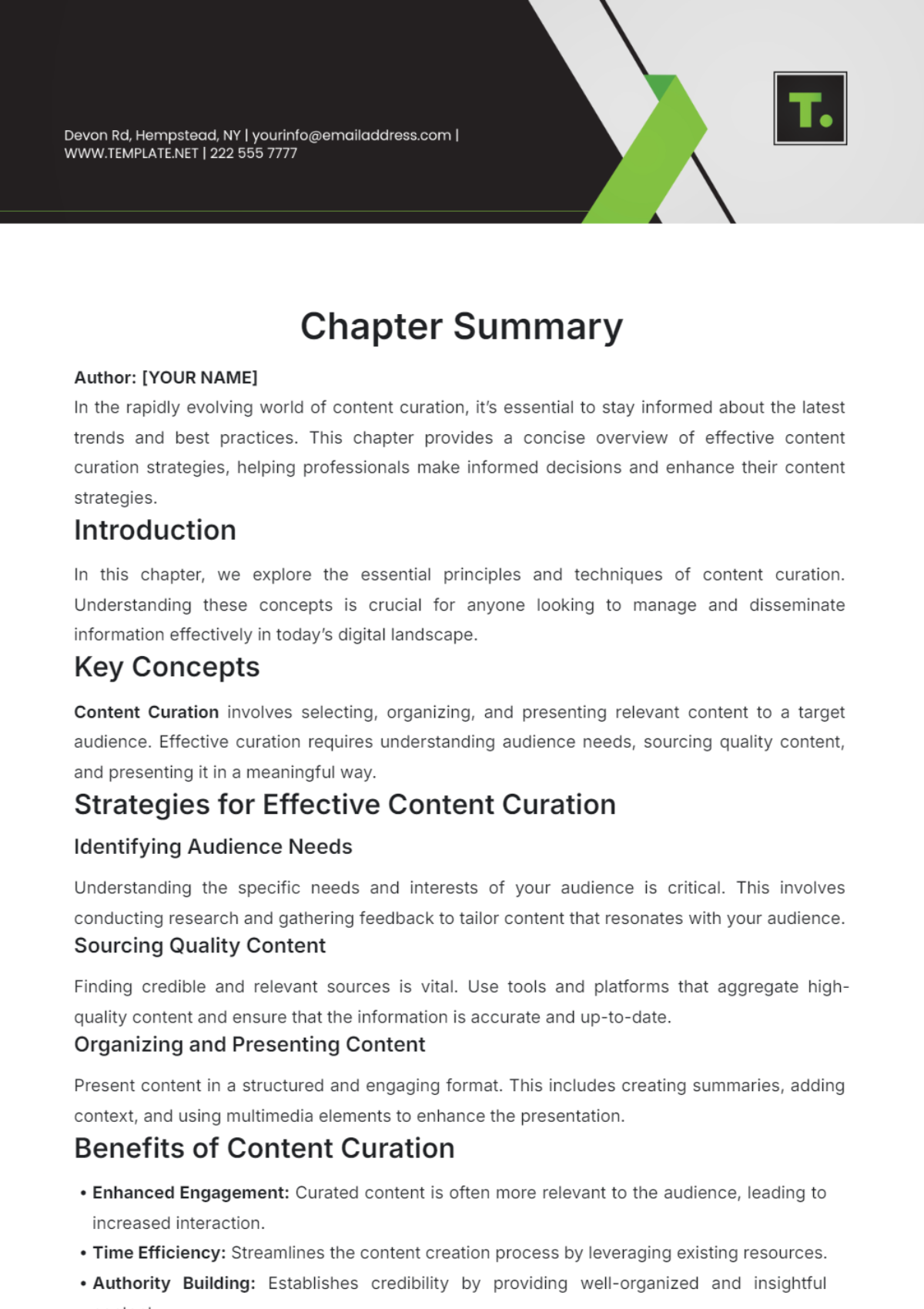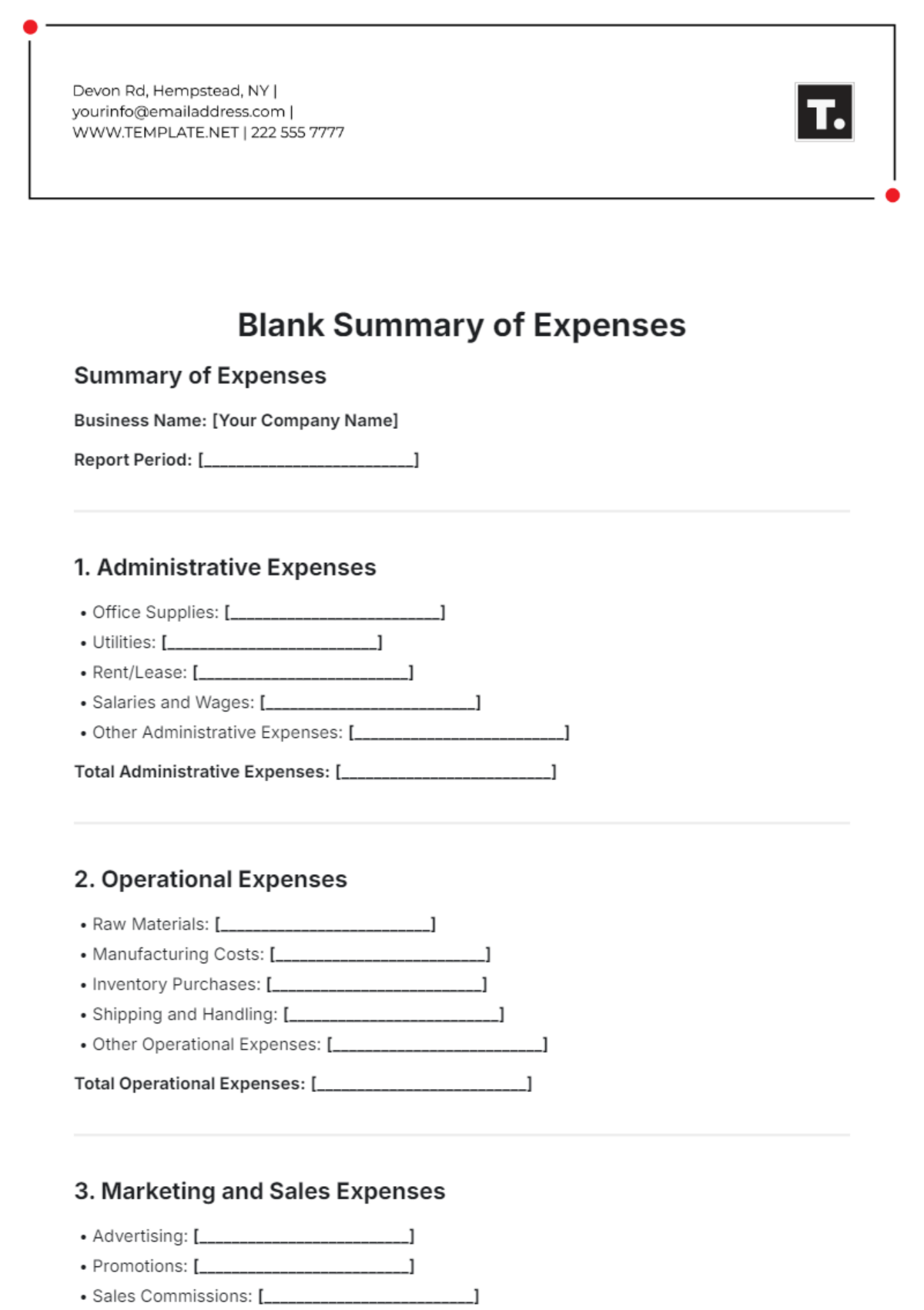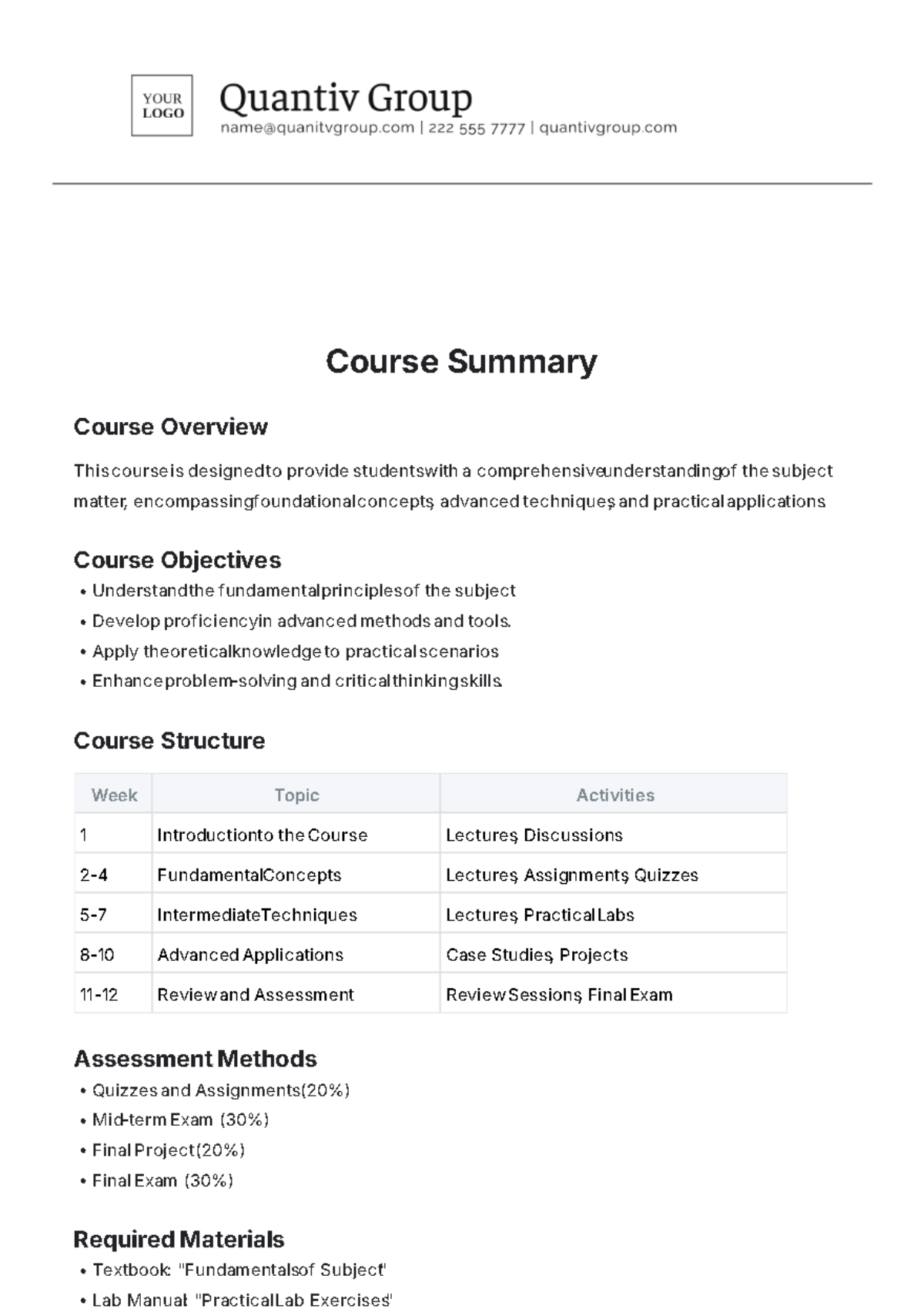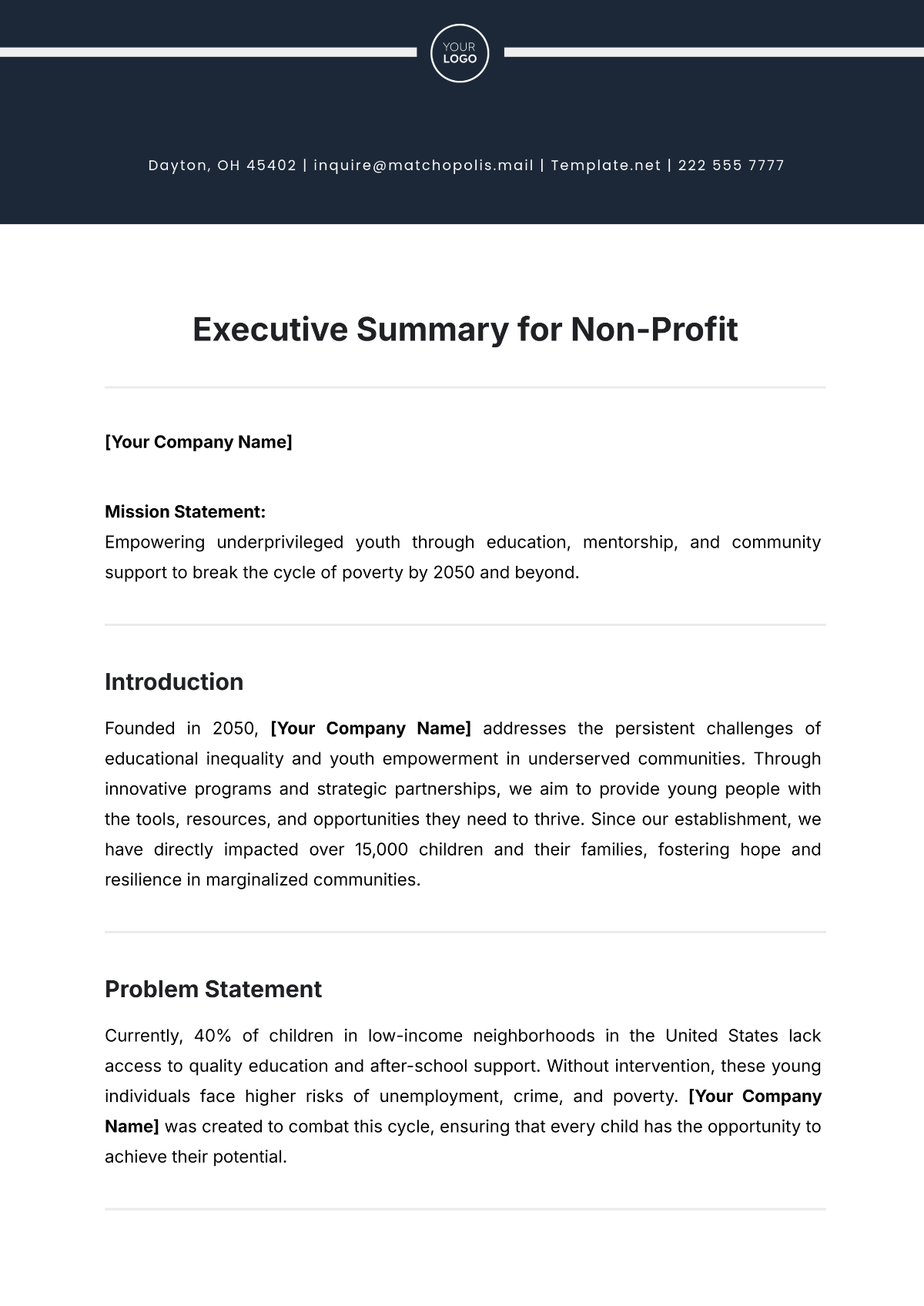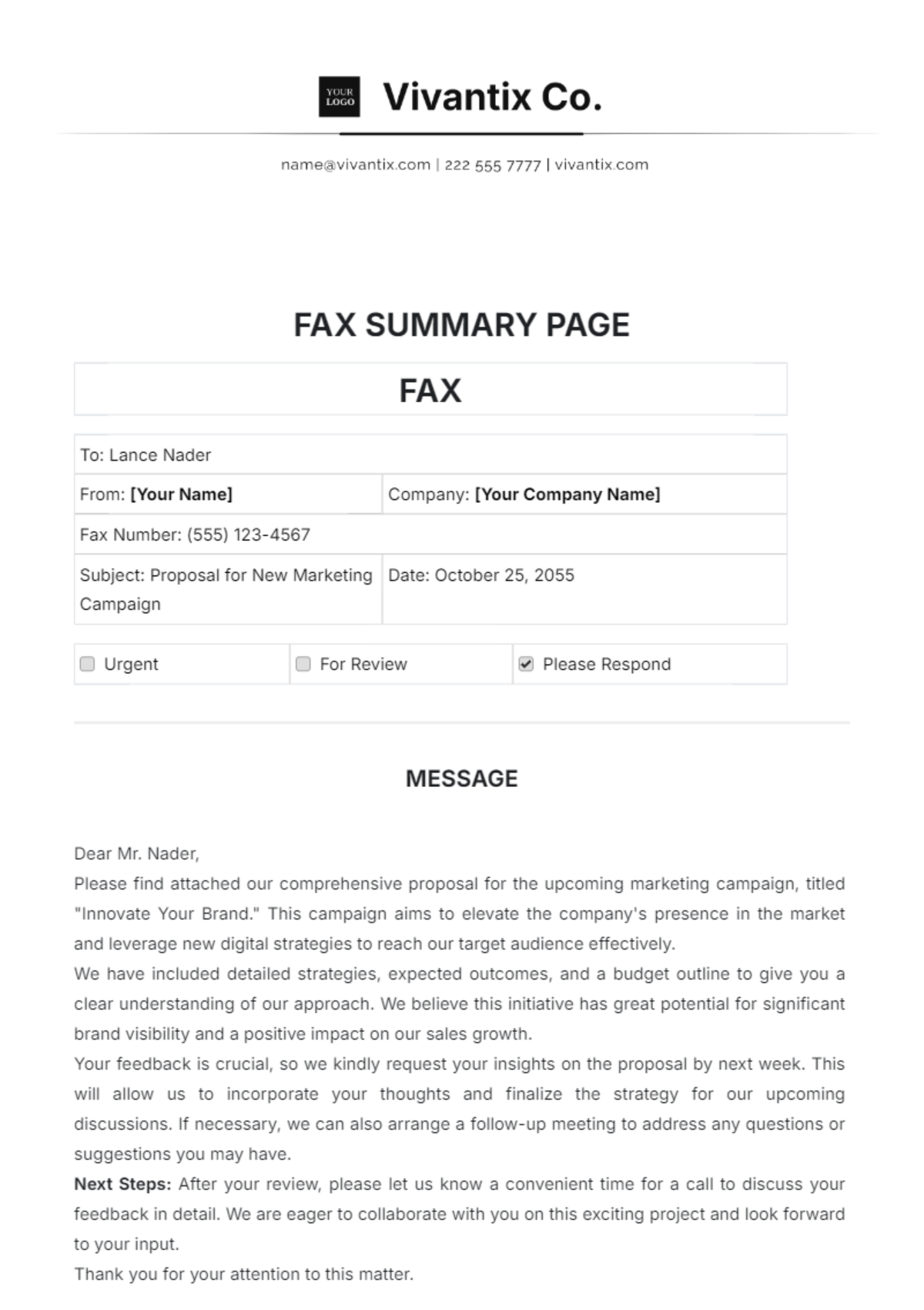Student Behavior Summary
Introduction:
The [STUDENT NAME] behavior summary template is designed to provide a comprehensive overview of the student's behavior and conduct within the academic setting. This template aims to document both positive and negative behavior, facilitating communication between educators, parents, and relevant stakeholders.
Student Name: [STUDENT NAME]
Class/Year: [CLASS/YEAR]
School: [YOUR SCHOOL NAME]
Behavior Observations:
A. Positive Behavior
In this section, positive Behavior displayed by the student are documented. This may include:
Participation: Actively engaging in classroom activities, discussions, and group work.
Respect: Demonstrating respect towards teachers, peers, and school staff.
Responsibility: Completing assigned tasks, following instructions, and being punctual.
Cooperation: Collaborating with classmates, assisting others, and contributing to a positive learning environment.
B. Areas of Improvement
This section highlights any areas where the student may need improvement in their behavior. This may include:
Disruptive Behavior: Examples of disruptive Behavior such as talking out of turn, disrupting lessons, or being disrespectful.
Lack of Focus: Instances where the student struggles to pay attention, complete tasks, or stay on topic.
Attendance: Any issues related to attendance, tardiness, or truancy.
Social Interactions: Difficulties in social interactions, conflicts with peers, or challenges in teamwork.
Interventions and Support:
A. Positive Reinforcement
Educators can document strategies used to reinforce positive behavior and encourage continued improvement. This may include verbal praise, rewards, certificates, or privileges.
B. Behavior Interventions
For areas of improvement, educators may implement specific interventions to address problematic Behavior . This may involve:
Behavior Contracts: Setting clear expectations and consequences for Behavior .
Individualized Support: Providing additional support or resources to help the student overcome challenges.
Counselling or Mentoring: Referring the student to counselling services or mentorship programmer to address underlying issues.
Communication with Parents/Guardians:
A. Feedback
Regular communication with parents/guardians is essential for addressing Behavior concerns effectively. Educators document feedback provided to parents/guardians regarding the student's behavior, progress, and any interventions implemented.
B. Collaborative Approach
Encouraging parents/guardians to be involved in addressing Behavior issues and working collaboratively with educators to support the student's development.
Progress Monitoring:
A. Behavioral Tracking
Regularly monitoring and tracking the student's behavior over time is essential for assessing progress and identifying areas for improvement. Use this section to record observations and track changes in behavior.
B. Assessment of Interventions
Evaluate the effectiveness of interventions implemented by assessing changes in behavior and determining whether adjustments are necessary. Use this section to document the outcomes of interventions and any modifications made.
Reflection and Goal Setting:
A. Student Reflection
Encourage the student to reflect on their behavior and its impact on themselves and others. Provide space for the student to express their thoughts and feelings about their behavior and identify areas for improvement.
B. Goal Setting
Collaboratively set behavioral goals with the student to work towards improvement. Use this section to outline specific, measurable, achievable, relevant, and time-bound (SMART) goals that align with the student's needs and aspirations.
Support Resources:
A. Additional Support Services
Identify and provide access to additional support services available within the school or community to address underlying issues contributing to the student's behavior. Use this section to list available resources and contact information for support services.
B. Parent/Guardian Involvement
Encourage parents/guardians to be actively involved in addressing behavioral issues and supporting the student's development. Use this section to provide guidance on how parents/guardians can reinforce positive behaviors at home and collaborate with educators.
Conclusion:
The [YOUR SCHOOL NAME] behavior summary template provides a structured approach to addressing student behavior. By documenting observations, implementing interventions, and fostering collaboration, we aim to support students like [STUDENT NAME] in their academic and personal development. Together, we create a positive learning environment where every student can thrive.
Summarized By: [YOUR NAME]
